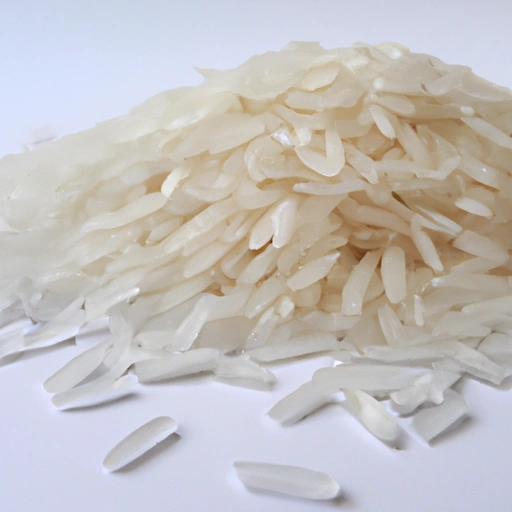Rice
Description

Rice, a cereal grain, is the most important staple food for a large part of the world's human population, providing more than one-fifth of the calories consumed by humans globally. It's a versatile ingredient that can be found in pantries across the globe, with different varieties catering to a vast array of culinary traditions and tastes. Rice is measured in different units depending on the region; from cups in American recipes (1 cup approximately equals 237 ml or 8.45 US fl oz), to grams and kilograms in European and Asian recipes (100 grams of rice equals roughly 0.22 lb or 3.53 oz).
Common uses
Rice is commonly used as a side dish, in salads, soups, and casseroles. It can also be ground into flour and used in bread, cakes, and noodles. Rice is an essential component of sushi and is often used to make beverages such as sake, rice milk, and rice vinegar.
Nutritional value
Calories
A typical serving of cooked white rice (1 cup or approximately 158 grams) contains about 206 kcal (American) / 862 kJ (European).
Protein
The same serving of cooked white rice provides about 4.25 grams of protein.
Fat
Rice is low in fat, with a serving containing approximately 0.44 grams.
Carbohydrates
Carbohydrates are abundant in rice, with a serving containing about 44.5 grams, primarily in the form of starch.
Vitamins
While milled rice (white rice) is often fortified with vitamins like thiamine and folate, rice naturally contains small amounts of B vitamins.
Minerals
Rice also provides minerals such as iron and magnesium, though the content can vary greatly depending on the rice variety.
Health benefits
Rice is a good source of energy due to its high carbohydrate content. Brown rice, in particular, is rich in dietary fiber and can aid digestive health. The bran layer in whole-grain rice has antioxidant properties. Regular consumption of whole grains like brown rice has been linked to a reduced risk of chronic diseases such as heart disease, type 2 diabetes, and certain cancers.
Potential risks
White rice has a high glycemic index, which may contribute to blood sugar spikes. Overconsumption of rice can lead to weight gain. Some rice may contain arsenic, and excessive intake may pose health risks. People with celiac disease should avoid rice products that are processed with or contain gluten-containing ingredients.
Common recipes
Rice is featured in a multitude of recipes from all over the world, including paella from Spain, risotto from Italy, pilaf from the Middle East, biryani from India, and fried rice from China.
Cooking methods
Rice can be boiled, steamed, or fried. It can also be cooked in a rice cooker or a pressure cooker for convenience.
Pairing with other ingredients
Rice pairs well with a variety of ingredients such as vegetables, beans, poultry, seafood, and meats. It also complements spices and herbs, adding to its versatility in cooking.
Summary
Rice is a fundamental food ingredient with a rich history and a plethora of nutritional benefits. It plays a critical role in many cultures' cuisine and can be prepared in countless ways. While it is generally healthful, it is advisable to consume rice in moderation and opt for whole-grain varieties when possible for additional health benefits.